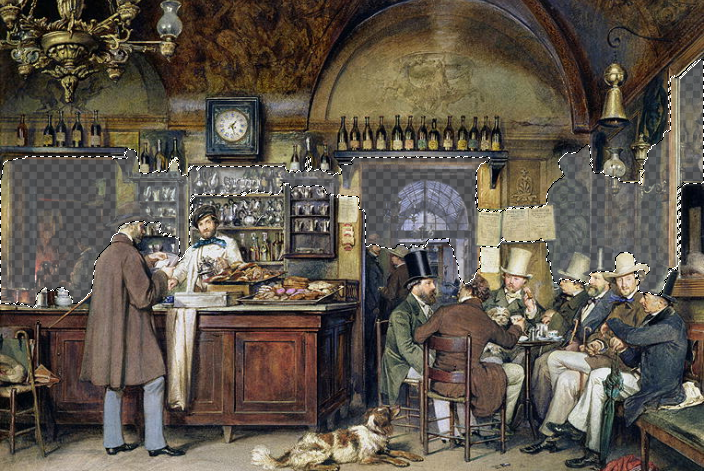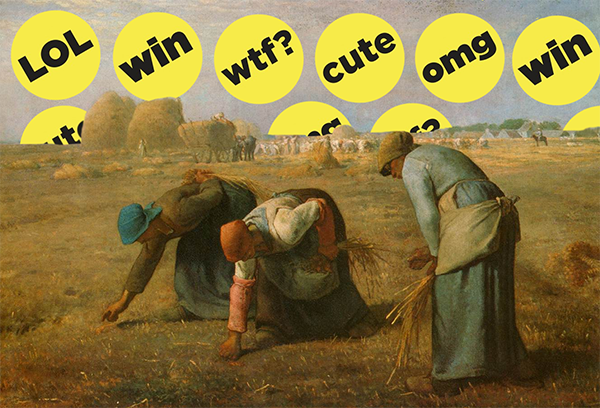by Vincenzo Marino – translated by Roberta Aiello
Charlie Hebdo, news and journalistic responsibility

Photo via Wikimedia Commons
Last week, 12 people were murdered in Paris during the attack against the newsroom of the satirical weekly newspaper Charlie Hebdo. It occurred – according to most reports – because of the treatment of the image of Mohammed in some cartoons (a worldwide debate on the publication of the cartoons by other media, the right to satire and freedom of expression has been raised and updates can be followed here).
Responsibility for the terrorist act was claimed by the Yemeni Al Qaeda division, as reported by Jeremy Scahill of The Intercept, citing a source within the group who asked to remain anonymous. The right to privacy of figures who might be deemed complicit in a massacre sparked a discussion about the legitimacy of the protection of sources, especially when they are considered close to terrorist organizations. Erik Wemple of the Washington Post asked Scahill some questions regarding this matter. Besides considering identity protection a journalistic duty to comply with in any case, the author of The Intercept adds that on the one hand there was the urgency of accepting the request by the source, after recognizing the credibility, justified by the importance of the news; on the other hand there was the fact that revealing the identity would have put at risk the safety of the informant. «My motivation was not to be first, but to provide information that would be of public value.»
From the journalistic point of view, the attack on Charlie Hebdo was also the “baptism by fire” of Reported.ly, First Look Media’s other venture, led by Andy Carvin and his small worldwide team (previously mentioned here). Carvin has published, on Medium, a report of the first coverage in the field, relating the ideas and making public the weaknesses of the first few days (speed, coordination, story on Facebook). This week Justin Ellis of NiemanLab interviewed the reporter, asking him about this first experience and the operation of this project. In essence, it is an entity still without a website that, through the coordination of six staff members, tries to make live coverage of events on various social media (according to the needs of the news) creating original dossiers with a dense network of contacts, about 200 Twitter lists and a set of tools to publish, share and fact-check – there is a thread on Reddit regarding this issue. It is a light beta-testing structure, which for now does not intend to try to reach «passive news consumers.» «Right now the way we’re reporting, we are not for everybody» – explained Kim Bui, West Coast Producer for Reported.ly. «We’re for people who are news junkies.»
There is space for news on the Internet, but it is small

The news is definitely not the only obsession of Internet users. In a post entitled «The most popular stuff on the web isn’t journalism and that’s fine,» Matthew Yglesias of Vox reminded us how, on any media, entertainment has always had the better of journalism – relegated historically to the status of «part of the media mix, and a distinctly minor part» – and that news itself, at all times, has always used lighter content to hybridize its products (gossip, horoscopes, recipes). According to Yglesias, the digital revolution did nothing but follow this pattern, albeit diminishing greatly the differences between news and disengagement. To prove this thesis, a few days ago the now familiar list of the 10 most popular content products by the New York Times in the previous year was published, in which it turns out that entertainment content (as in 2013) continues to dominate on the news (an interactive gallery, a list on the most beautiful places to visit in 2014, a quiz, an open letter, the news of the death of the actors Philip Seymour Hoffman and Robin Williams).
To analyze the New York Times‘ trends, however, is not only a way to understand the tendencies of the readers and try to probe the state of health of online journalism, but also to find out how the newspaper is adapting to the new editorial scenario, in light of the “Innovation Report” published last May. To grow online readership, in fact, the NYT thought up the «audience development editor» role, entrusting it to Alex MacCallum, former news editor of the Huffington Post (of whom Lucia Moses of DigiDay traced a profile) with the aim of involving the community more, avoiding the BuzzFeed style drifts – which for years has carried a negative stigma, searching for easy clicks. «The mission of The New York Times is about the best journalism in the world and giving people accurate, timely information. I don’t think that BuzzFeed is competing in that space,» explained MacCallum, imagining a certain biological diversity from the website of Jonah Peretti. Yet, beyond the good intentions, the readers – says Mathew Ingram of GigaOM – continue to follow that pattern, and still prefer light content (galleries, quizzes, lists) not very different from gifs and listicles. «Whether the Times likes it or not, it and BuzzFeed are in the same business, and at this point BuzzFeed is winning.»
Genius and journalists who leave newspapers

In the current media landscape, journalism does not stop at just narrative text of the news, and the journalist’s job requires different skills in the content construction process. One of the news items of the week was the passage of the famous music critic of the New Yorker Sasha Frere-Jones to Genius. Genius is an online service which originated as Rap Genius, which allowed users to annotate the lyrics of rap songs and paraphrase them through text and multimedia content. The three creators, supported by considerable investment funds, decided a few months ago to extend the service to the web, eliminating the suffix “Rap,” declaring the intention of «Annotate the world» – as their motto says. In essence, through this, notes can be added (with highlights and post-it) to any type of content on the Web. It is a sort of omnipresent Wikipedia, applied to any expression of the Internet, based on the well-known feedback mechanisms. «Is annotating rap lyrics the future of media?» wonders Timothy B. Lee. And. above all, what does this mean for the infamous future of journalism?
Sasha Frere-Jones is not the first journalist to leave a traditional newsroom (he will continue to work from outside) for a less conventional set-up. The exodus began some years ago and has continued with a long list of journalists who waved goodbye to paper and newsrooms for digital only projects, so much so that the same Frere-Johnes – as recalled by Foster Kramer – in 2010 had decided to temporarily leave the New Yorker to embark on a new initiative of Rupert Murdoch, The Daily, the unfortunate iPad-only newspaper which survived only for a few issues. His role at Genius, as noted by some, could be crucial to frame the project from a journalistic point of view. It, at least potentially, could become useful in the storytelling process, helping in reading and discussion with readers. At the moment, in spite of the 4.3 million unique visitors reached by the website in November (ComScore data) the company does not seem to have ever produced substantial profits, waiting to create an audience big enough to make Genius indispensable to all Internet users – or at least «some rich guys think so.»


